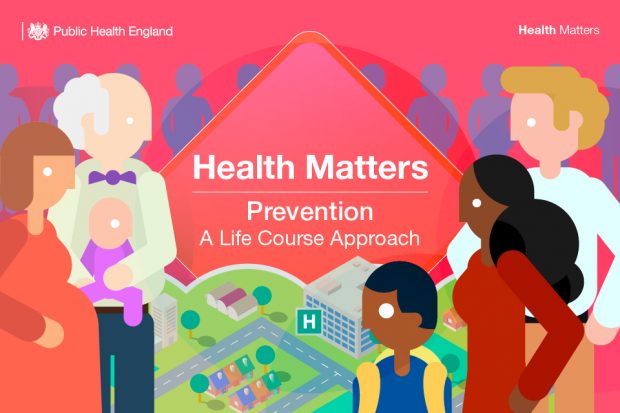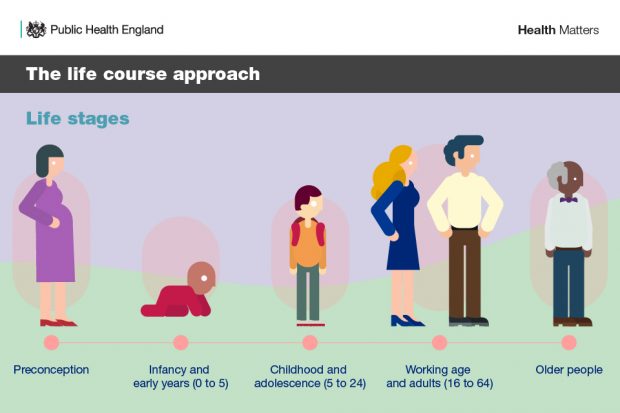
There are around 11 million people across the UK with hearing loss – the partial or total inability to hear in one or both ears, of whom 50,000 are children.
The Health Profile for England: 2018 highlighted that hearing loss, together with vision loss, skin diseases and oral problems account for nearly 20% of morbidity (Years Lived with Disability), with age-related hearing loss a growing burden. By 2031, it is estimated that 14.5 million people, approximately 20% of the UK population, will have hearing loss.
Why is this an important public health issue? Firstly, hearing loss affects around 1 in 6 of us, from birth or acquired during the course of our lives and has a huge impact on our health and wellbeing; secondly, it is largely preventable or treatable with cost effective interventions; and thirdly, the costs of unaddressed hearing loss to individuals, their families and wider society are immense. The World Health Organization (WHO) estimates annual costs to be in the range of $750-790 billion globally.
This blog describes how people are affected by hearing loss across the life course and sets out actions for prevention and treatment.
Scale and impact of hearing loss across the life course
Around 1 to 2 babies in every 1,000 are born with permanent hearing loss which may result from genetic causes, complications at birth, or certain infectious diseases.
Early diagnosis of hearing loss and intervention in newborn babies is essential for the development of early speech, language and communication skills. In order to detect problems at an early stage, parents of all babies born in England are offered hearing screening for their baby within 4 to 5 weeks of birth.
Hearing loss can impact on children’s communication and literacy development and affect education and future work prospects. Newborn babies who show signs of hearing loss are referred to specialist services for assessment, diagnosis and treatment/management, including fitting of hearing aids where appropriate. Recent changes to NICE guidance will result in more children and adults being eligible for cochlear implants.
PHE is rolling out a programme on speech, language and communication including training for health visitors, pathway development and an early language assessment tool to be used at the 2 to 2 ½ year health visiting review.
Of the estimated 50,000 children with hearing loss, around half are born with it while the other half lose their hearing during childhood. The WHO recommends immunising children against childhood diseases, including measles, meningitis, rubella and mumps, to prevent hearing loss which can arise as a complication of these diseases. In England, the combined MMR vaccine is routinely offered to all children.

As children grow and move into adolescence and young adulthood, exposure to loud music can be a major risk factor for hearing loss.
Prevention measures include reducing exposure to loud sounds by raising awareness about the risks and developing and enforcing relevant legislation. For instance, the WHO has developed an initiative called ‘make listening safe’ which recommends implementing the WHO-ITU global standard for personal audio systems and devices. This initiative could help prevent hearing loss through implementing a maximum weekly exposure to noise, including reduced limits for ‘sensitive’ individuals, such as children.
Exposure to noise at work can cause irreversible hearing damage. Industrial hearing loss remains the occupational disease with the highest number of civil claims, accounting for around 75% of all occupational disease claims. Most food and drink industries have processes that emit high noise levels, which could adversely affect the hearing of their employees. Workers in the music industry are also at a higher risk of hearing loss. One study of a large classical orchestra reported that hearing loss was a significant problem for around 44% of the musicians.
Employers are required to take action on noise under the Control of Noise at Work Regulations and manage the risk of hearing loss through a hierarchy of control measures, from controlling noise at source through to wearing ear protection as a last resort.
We know that hearing loss is a barrier to finding and remaining in employment. Five million people of working age in the UK are living with hearing loss or deafness. A survey of 1,000 people in 2018 found that more than half felt unfairly treated at work due to their hearing loss.
What more can we do to prevent hearing loss?
There are several areas for potential action. Firstly, at an individual level, there is a need to tackle acceptance among the public that age-related hearing loss is inevitable, and you just have to put up with it. On the contrary, hearing loss is largely preventable and treatable, hearing aids are a cost effective intervention and recommended for adults with mild to moderate hearing loss to improve quality of life and listening ability.
Secondly, there is a need to address the stigma associated with hearing loss and the wearing of hearing aids especially in the workplace. There is also a need to educate the workforce on simple adjustments that help communication for people with hearing loss, for example turning on your camera when you use video conferencing.
Thirdly, with only around 40% of people who need hearing aids having them, there is a need to increase awareness that hearing aids are available on the NHS. It is important to ensure that information and support is available to everyone following the supply of a hearing aid – helping people to continue to use them. There is also a need to understand more about why some people do not use the hearing aids that are made available.
And finally, we should all be looking after our hearing in much the same way as our vision, protecting ourselves from loud noise and seeking help for hearing loss at an early stage.
Visit the Health Matters area of GOV.UK or sign up to receive the latest updates through our e-bulletin. If you found this blog helpful, you can read other Health Matters blogs.

1 comment
Comment by Ruth Thomsen posted on
Can we meet to discuss how the co produced work about hearing loss across the life course has achieved so far?
https://www.england.nhs.uk/publication/what-works-guides-action-plan-on-hearing-loss/